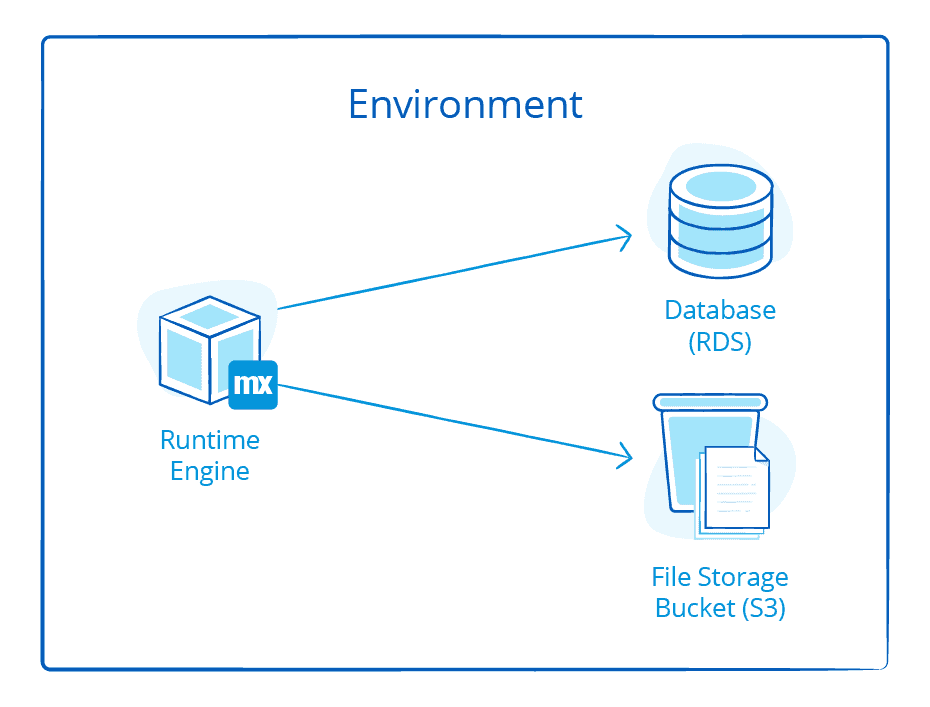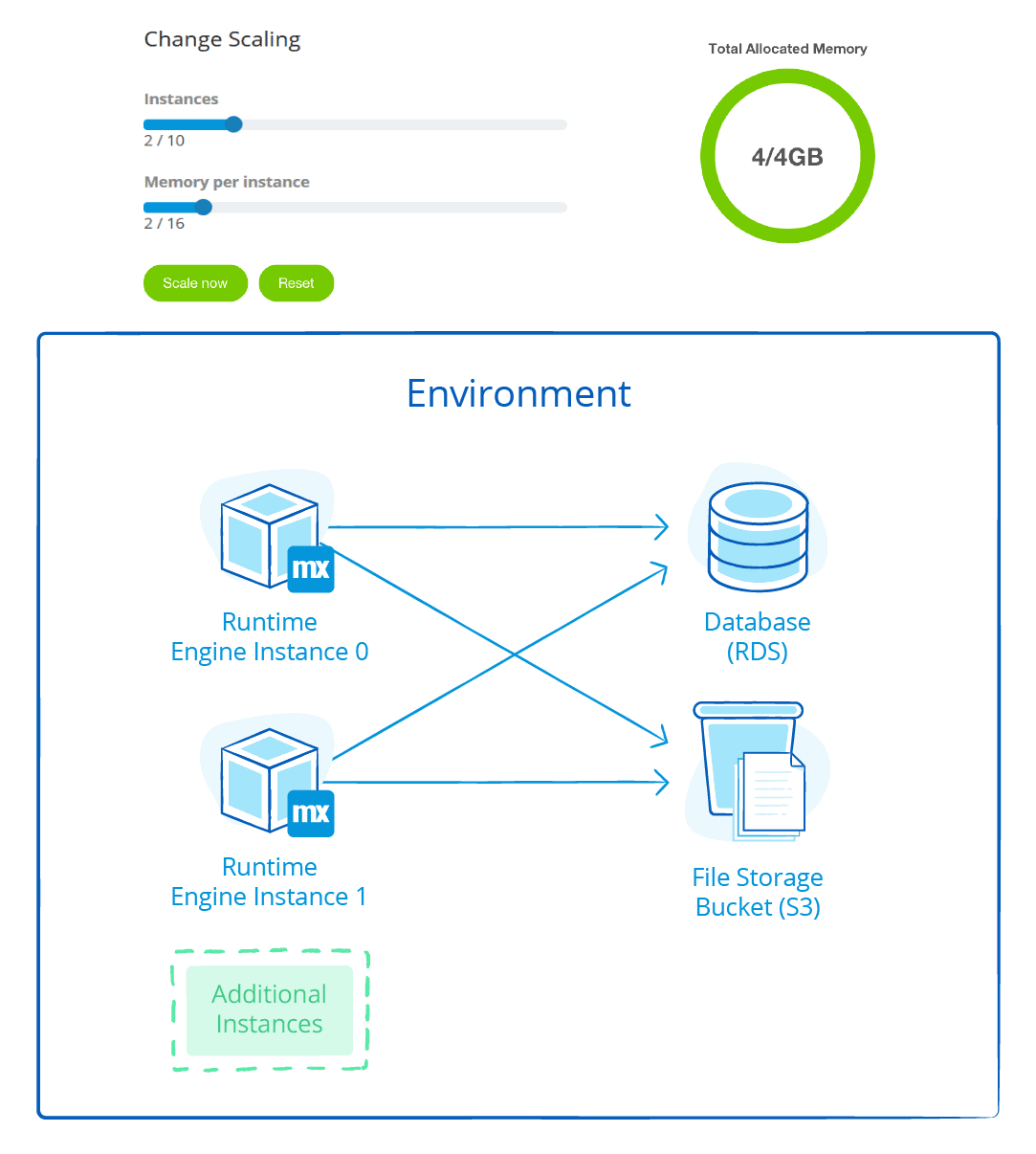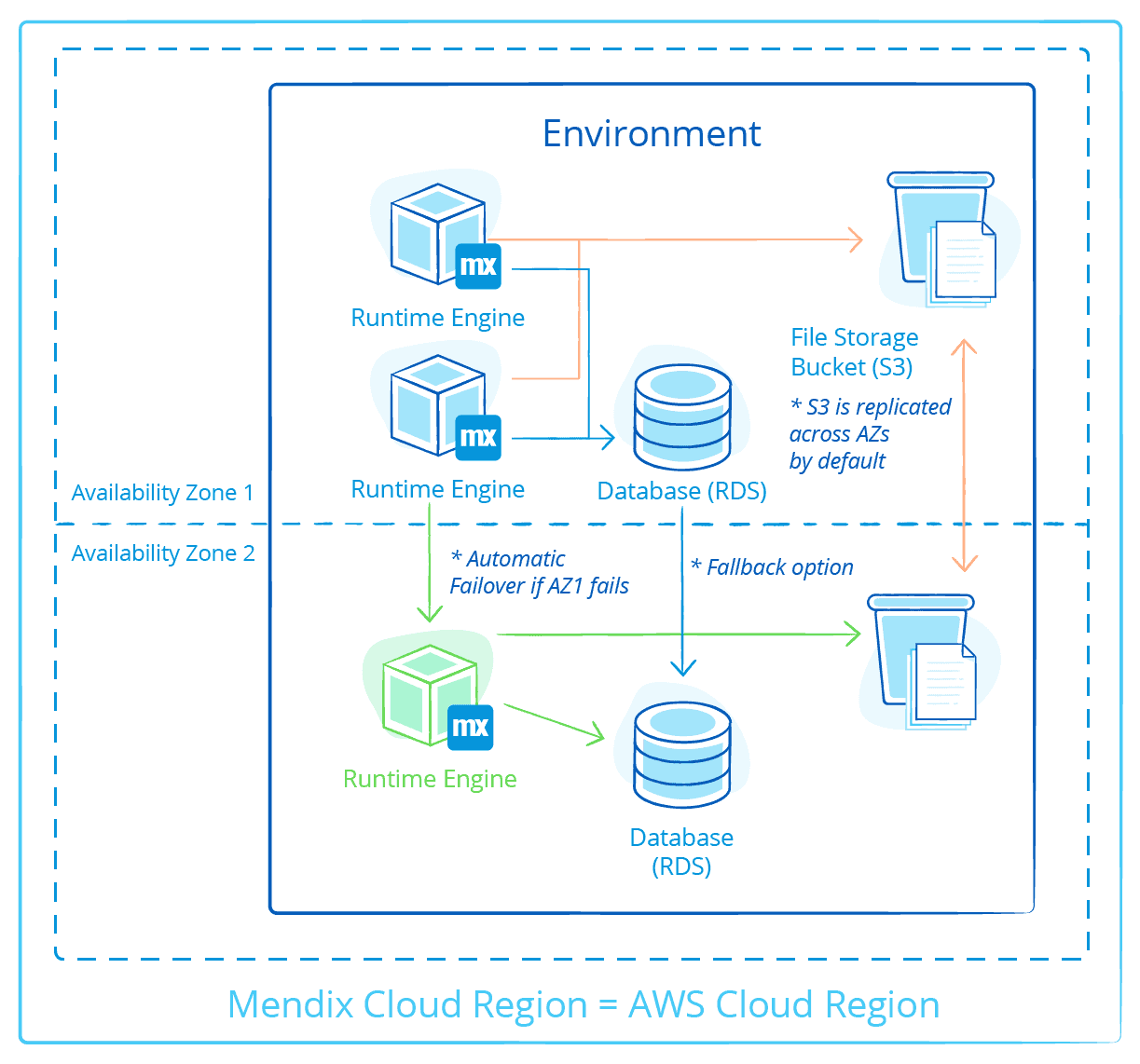Cloud Architecture
What Does the Mendix Deployment Architecture Look Like?
Mendix Cloud is a PaaS-based cloud offering based on Kubernetes containerization technology that runs on the IaaS layer of Amazon Web Services. A Mendix application will run in a container. A container in Mendix Cloud has standard support for horizontal and vertical scaling and auto-healing.
Scaling up and down can be done without any downtime, as it is just a matter of adding or removing containers.
The Mendix Cloud layer is deployed in multiple availability zones for each AWS region. An availability zone is a physical data-center location of AWS within a region.
A Mendix application needs a database and file storage to operate. In the Mendix Cloud, these aPaaS services are directly consumed from the AWS service layer. For the database, the Mendix Cloud makes use of RDS PostgreSQL, and for the file storage, it makes use of S3. Both of these services are Multi-AZ configured, so data is replicated across multiple data centers in one region.

Where Does Mendix Host My Application?
The Mendix Cloud can provide hosting facilities in the US, APAC, and the EU.
Mendix guarantees that the data will not leave the region, should your company require this.
For more information, see the Mendix Cloud Deployment Options.
How Is Application Isolation Organized?
Within the Mendix Cloud, the logical term “environment” is used to describe the application isolation. Each application runs in an environment, and is fully separated from other apps for computing, memory, and storage. A Mendix app runs on one or more Mendix Runtime Engine instances within the environment (where the environment is dedicated to a single application). Also, for each application, a dedicated database and S3 bucket is provisioned in order to have full isolation on the data level as well.

How Does Mendix Cloud Offer High Availability?
The Mendix Cloud offers high availability as an option to customers with an enterprise license. This ensures zero downtime in the case of a Mendix Runtime outage. Users are able to scale Mendix app environments using the Mendix Portal. When more than one instance is selected, the app can continue to run if one instance fails.

How Does Mendix Provide Disaster Recovery?
Availability Zones
Mendix Cloud architecture keeps runtime engines and databases in the same availability zone (AZ) to minimize latency in database operations. It automatically applies failover to a geographically separate AZ if the current AZ fails. New copies of your app will be started automatically in the new AZ. File storage buckets are automatically replicated by AWS across multiple AZs and, with Mendix Fallback options, the database can also be replicated automatically through streaming – or you can restore a backup to the new AZ.
All backups are copied to another region, but the data will not leave the continent, should your company require this.

Multi-Regional Failover
Mendix Cloud architecture also allows failover to a secundary region within the same continent in case the primary region fails. When multi-regional failover is enabled on an environment (using a specific Cloud Resource plan) the app and it’s data are continiously synced to the secondary region. In case the primary region fails (all availability zones) this standby app is started in the secondary region using the replicated data. The traffic controller automatically routes incoming requests to the secondary region. Once the primary region is restored the app and its data are transferred back to the primary region and the traffic controller will route incoming requests to the primary region.
How Does Mendix Cloud Provide Auto-Recovery & Auto-Healing?
 The Mendix Cloud enables auto-recovery and failover within the same availability zone, and the user load is balanced over two runtime engines. In the rare occurrence that a single runtime engine crashes, the other runtime engine automatically takes over all user requests while the Kubernetes Health Check automatically replaces the crashed runtime engine with a new runtime engine. Because of the stateless architecture of Mendix, end-users are not impacted in this scenario.
The Mendix Cloud enables auto-recovery and failover within the same availability zone, and the user load is balanced over two runtime engines. In the rare occurrence that a single runtime engine crashes, the other runtime engine automatically takes over all user requests while the Kubernetes Health Check automatically replaces the crashed runtime engine with a new runtime engine. Because of the stateless architecture of Mendix, end-users are not impacted in this scenario.
How Does Mendix Cloud Provide Security?
The Mendix Platform is secured via various Security controls including various levels of encryption, transport layer security (TLS), access restrictions, protection from malicious and unwanted internet traffic, continuously monitored for vulnerabilities and anomalies.
For more information, see Security.